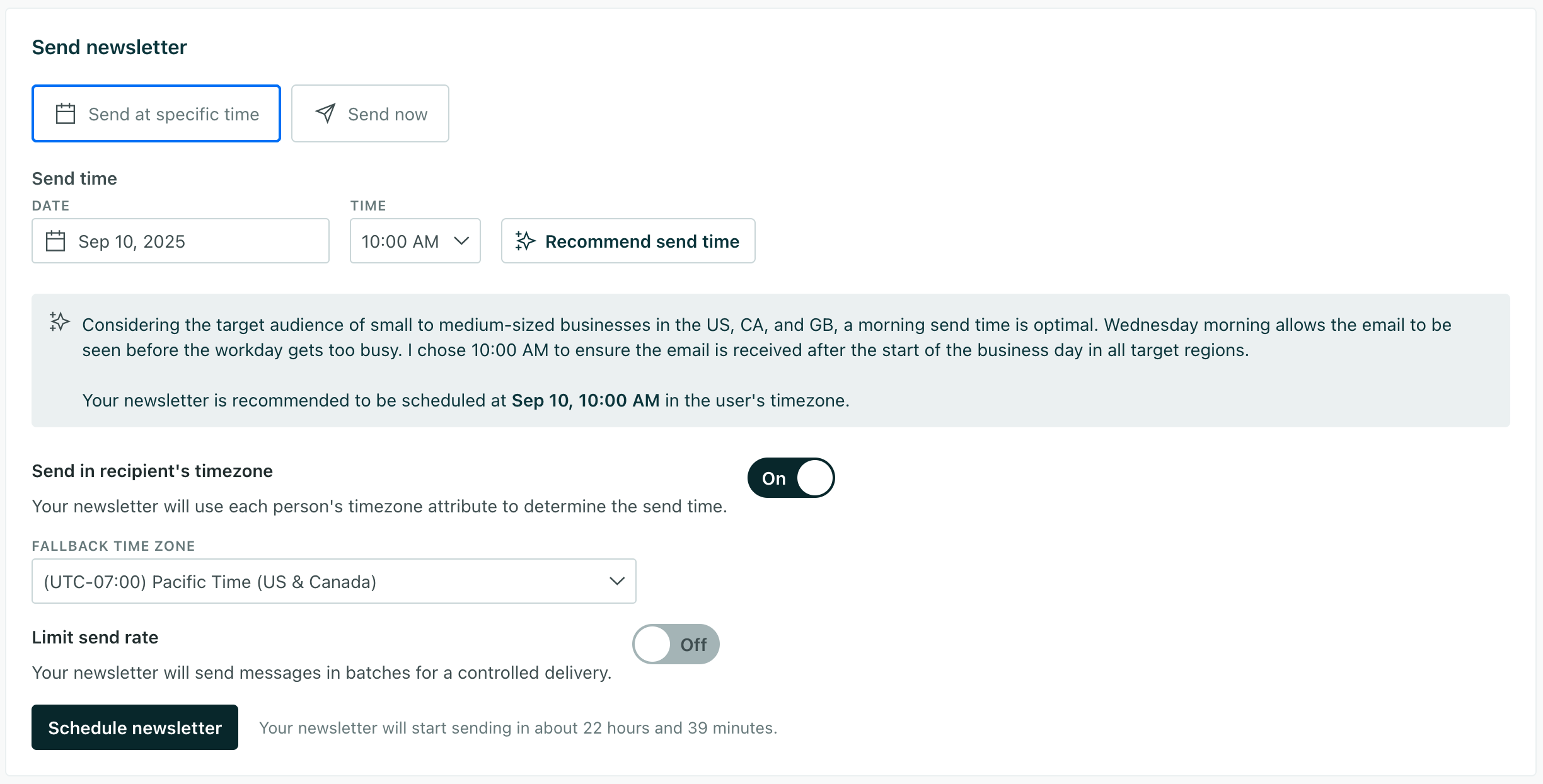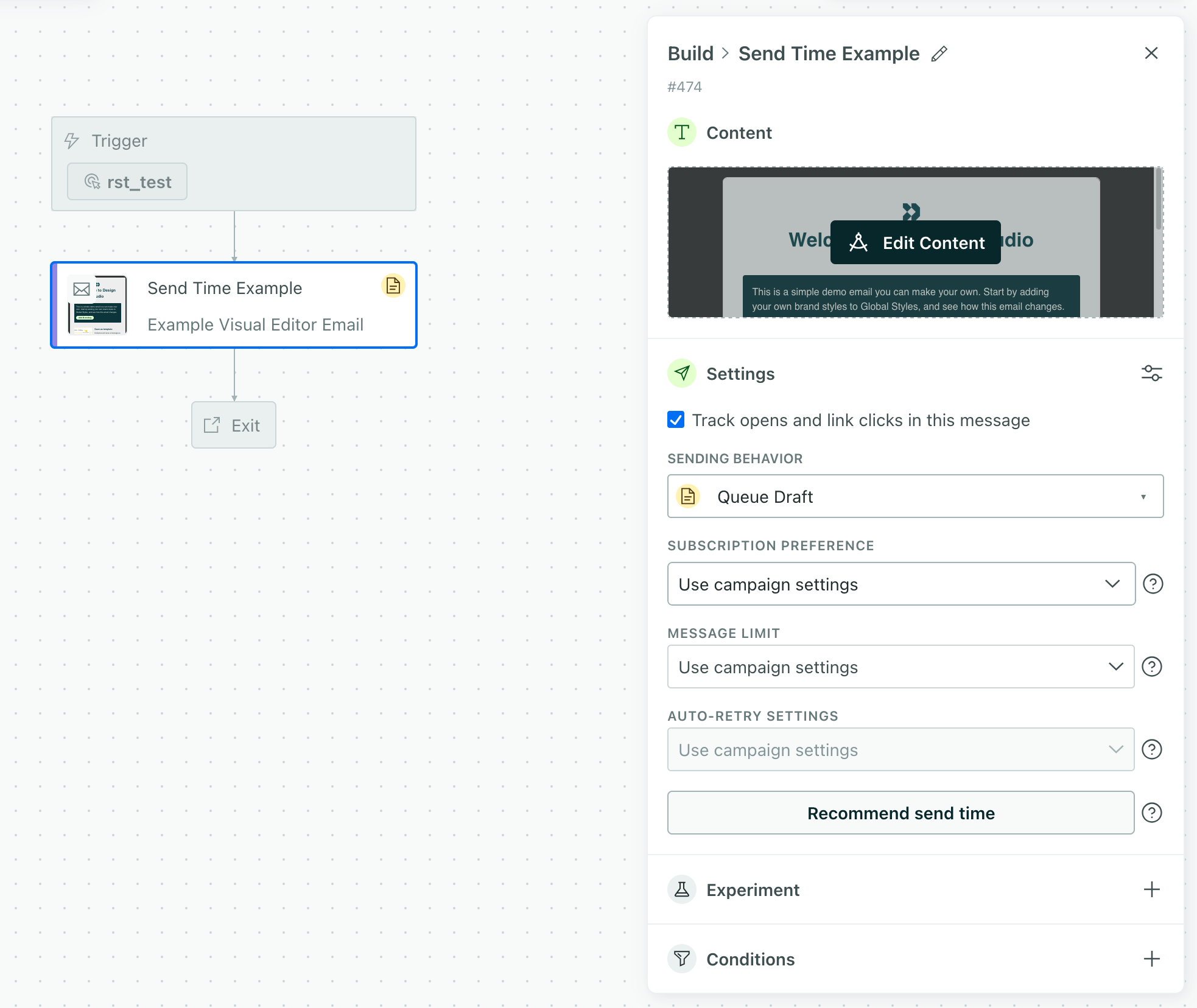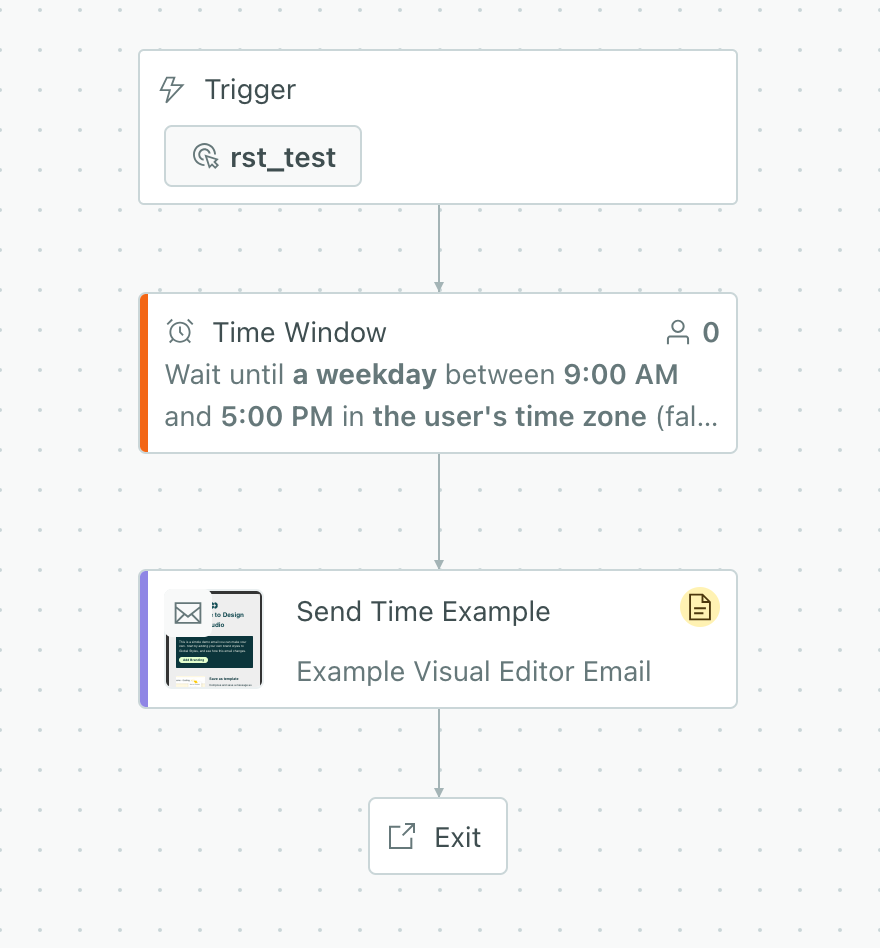Recommended send time
UpdatedWhen you send an email from a campaign or a newsletter, Customer.io can recommend an appropriate send time based on your users’ time zones.
Is Customer.io AI enabled?
You need to enable Customer.io AI in your Data & Privacy settings to use this feature—if you haven’t already. See our AI overview to learn more about how you can use AI in Customer.io.
How it works
When you set up a newsletter or an email in a campaign, you can click Recommend send time to schedule the email to send at the best time for your audience.
To generate recommended send times, we use AI along with the content of your message and your audience’s time zone. The recommendation also sets a fallback send time, which we’ll use whenever we don’t know someone’s time zone.
timezoneattribute exist?} a--->|Yes|b(Send message in
customer time zone) a-.->|No|c{Does
cio_timezoneattribute exist?} c-->|Yes|b c-.->|No|d(Send message in
fallback time zone)
Recommended send times don’t account for holidays
Recommended send times help you send messages at the right times when users encounter a message, but they don’t account for holidays and other dates that might be special to your audience (like birthdays, anniversaries, etc.).
Capture your audience’s time zone
To take advantage of send time recommendations, you need to capture your audience’s time zone information. You can do this using our automatic geolocation data collection feature or by setting a timezone attributeA key-value pair that you associate with a person or an object—like a person’s name, the date they were created in your workspace, or a company’s billing date etc. Use attributes to target people and personalize messages. in one of our supported formats.
Anybody who doesn’t have a cio_timezone or timezone attribute set will get the message at the fallback time. If you’re not sure if people have a cio_timezone or timezone attribute, you can browse People in your workspace.
Using recommended send time in a newsletter
In the Review step of a newsletter, click Recommend send time to schedule the newsletter to send at the best time for your audience. If you don’t see this setting, you may need to enable Customer.io AI features in your Data & Privacy settings.
When we recommend a send time, you can click Why this send time? to get an explanation of why we recommended that time. You can also provide additional context to help us tune the recommendation to better suit your message and audience.


Using recommended send time in a campaign
When you set up an email in a campaign, open your message Settings and you’ll see a Recommended Send Time option. If you don’t see this setting, you need to enable Customer.io AI features in your Data & Privacy settings.
- Click Recommend Send Time to schedule the email to send at the best time for your audience.


- Select the fallback time zone and then click the recommended option.


- (Optional) Click Why this send time? to get an explanation of why we recommended that time. You can also provide additional context to help us tune the recommendation to better suit your message and audience.
This creates a new Time Window step directly above the message in the workflow. This is how we manage time zone-based sending in a campaign workflow. The Time Window step holds people in the campaign until their recommended send time. When they fall into the recommended time window, they’ll get your message and continue through the campaign.
If the person is already in the time window when they reach that step, we’ll send the message immediately and they’ll continue through the campaign. They don’t have to wait for the next time window.


Set your messages to send automatically
If your messages are set to Queue Draft, we’ll queue your draft at the recommended send time but we won’t send it. That might defeat the purpose of using recommended send times. Make sure you set your messages to Send Automatically to take advantage of recommended send times.
Removing or updating the recommended send time
You can edit the time window step directly. If you want to recommend a new time, you’ll need to delete the time window step above your message. Select your message, click Settings and then you can recommend a new send time.
When you recommend a new time, we’ll create a new Time Window step above your message.

